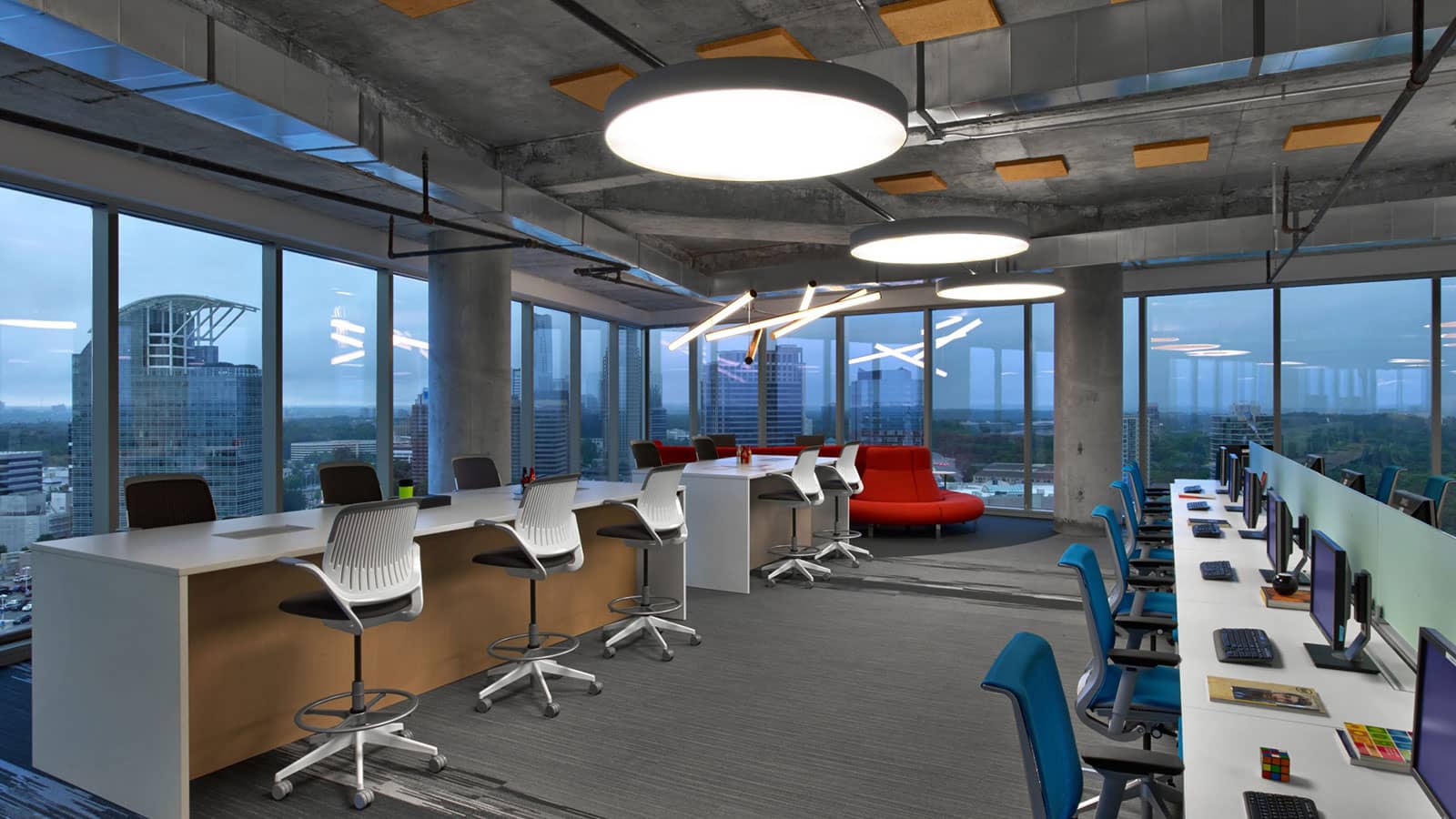More...
By Terry Huang | Senior Workplace Strategist | April 16, 2015
Strategist Terry Huang Outlines the Lenses Through Which the Modern Workplace is Designed.
Workplace strategy is not about following trends and reacting to the latest article on whether open office is bad for productivity.
So what is workplace strategy and how do—and should—strategists think?
A majority of the corporate real estate professionals, facilities managers, strategists, and designers involved in workplace transformation frame workplace strategy with the same, widely adopted definition; “the dynamic alignment of an organization’s work patterns with the work environment to enable peak performance and reduce costs.” This focus has helped strategists refine solutions that align factors including mobility, sustainability, technology, wellness, flexibility, brand experience, attraction, and retention with changing demographics. Based on these factors, workplace strategy has largely converged into a flexible kit-of-parts based on notion of activity-based work settings.
However, framing workplace strategy consistently through the same “alignment” lens limits our ability to innovate because we are always asking the same questions. So how do we ask the questions that lead to the next big idea such as putting corporate campuses in city centers, to generating co-working spaces as a new business model, to creating technology platforms such as LiquidSpace?
Part of the answer lies in how we think about the process of strategy formation.
Research into the world of strategic thinking in Strategy Safari categorizes two wings of cognitive thought processes: Objective/Prescriptive, which treats the processing and structuring of knowledge as an effort of re-creation; and Subjective/Emergent, which sees strategy as some kind of interpretation and creation of the world.
A majority of strategic thinking for the workplace takes place in the objective wing. Under this wing, the most popular school of thought among strategists is the “design school,” looking to establish a fit between an organization’s internal and external capabilities, such as a workplace that adapts to the work patterns of the work force or an environment that reconfigures for a particular project life cycle. Those who identify with the “planning school” formalize the process of strategic execution as seen in strategic programming and scenario planning. And the “entrepreneurial school” values strategy through the eye of leadership and the process of visioning. This is exemplified in Apple’s new Cupertino headquarters that embody the leadership’s perception of brand and what the organization stands for. A majority of strategists fall into one of these three schools of thinking.
Then a much smaller group of strategists think about “positioning” that builds strategy based on the most desirable conditions recognizing macro and micro-socioeconomic factors. We see this, in its most simplistic form, in companies that establish a major presence in urban centers, driven by a desire to win the battle for talent and the ease of positioning within that location.
With just four different schools of strategic thought processes above, we have already expanded the conversation and opportunity to solve problems at vastly different levels. In the next installment, we will complete the exploration diving into the subjective wing of strategy.
The next installment in this series will publish on April 30.
Like What You See?
Want to learn more about IA's approach to workplace strategy? Click below to read "Strategy in 2018: Here Comes GenZ!"
Strategy: how to ask the questions that will lead to the next big idea.




